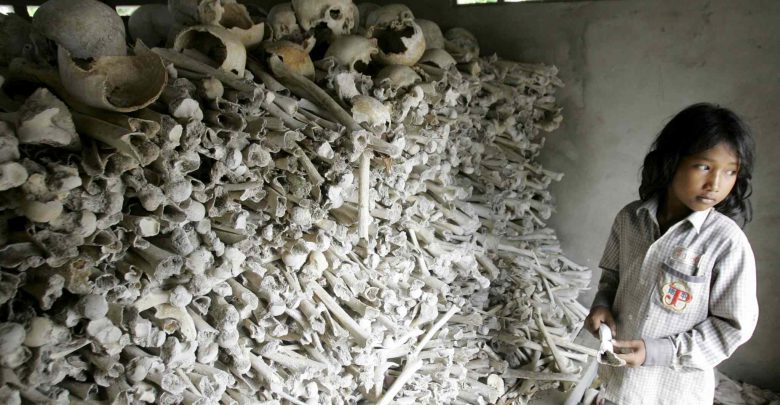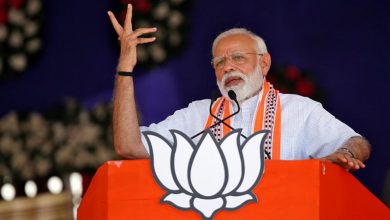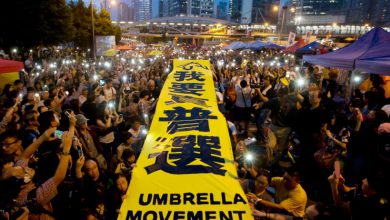AllAsia and OceaniaResolved
Revolutionary Terror in Cambodia
Marx’s Ideological Legacy and the Genocide in Cambodia

The Cambodian genocide was one of the worst incidents of mass killing following the end of the second world war. Led by Pol Pot, the ultra-Maoist Khmer Rouge, sought to cleanse Cambodia of all those they believed would impede their goal of establishing a socialist agrarian utopia. The Khmer Rouge killed between 1.7 million people, nearly a quarter of the population, although some estimate up to three million dead.
The origin of revolutionary “terrorism” is attributed to French Revolutionary Robespierre, who, in 1794, explained the necessity of terror. “…the basis of popular government during a revolution is both virtue and terror.” His reign of terror lasted a year, leaving both him and 15,000 others dead. However, Robespierre was not the only revolutionary who advocated the use of mass violence to advance the development of a people’s government. In 1848, Karl Marx wrote, “There is only one way in which the murderous death agonies of the old society and the bloody birth throes of the new society can be shortened, simplified and concentrated, and that way is revolutionary terror.”
Marx believed that many of those in a capitalist society would not simply acquiesce their control over the means of production and allow a worker’s state to arise. Those in power would need to be removed in the event of a people’s revolution. Moreover, religious, social, and ethnic groups unwilling to conform to the new social framework would need to be purged.
Marxist thought made its way from Europe, into Russia, and then Asia, where it was adopted by Mao Zedong and applied in China. The application of widespread violence was used in Russia (the Red Terror) and in China (the Cultural Revolution) to establish new communist states. As a young man, Pol Pot studied in Paris where he was exposed to the writings of Marx, Stalin, and Mao, whose work laid out the ideological and practical framework for the establishment of an egalitarian, communist society.
Pol Pot returned to Cambodia, involving himself with local communist parties. He rose to become his communist party’s secretary general and eventually leader of the Khmer Rouge.
The Communist Revolution in Cambodia
Upon seizing Phnom Penh in April 1975, the Khmer Rouge began a forced exodus of the urban population into the countryside and forced to work. Informed by Moist thought, the Khmer Rouge sought to purify the urban populations through farm labor and return Cambodia to a socialist, agricultural society. While many of the deaths stemmed from mismanagement of food supplies and malnutrition, up to million took place in the Cambodian killing fields.
Pol Pot believed the ruling party must be comprised solely of the working class, free of any western influence. Thus, anyone who had been tainted by western culture, education, and capitalism needed to be removed since they would be unwilling or unable to adapt to the new agrarian society. Only those who belonged to the ethnic Cambodian peasant class would be fit. Those deemed not “pure” enough for the new society were taken and shot in mass graves or killed with pick-axes to save bullets.
Bodies continue to surface to this day. Hundreds of thousands of others simply starved or were worked to death in labor camps. Like Mao and Stalin, Pol Pot was also an ardent communist, so included in the purge were tens of thousands of Vietnamese, Chinese, Muslims, and Buddhist monks. Karl Marx believed religion to be “opiate of the masses” and would interfere with the creation of a worker’s state.
The Khmer Rouge believed the new nation needed to be entirely self-sufficient and free from foreign influence. Intellectuals, journalists, students, business leaders, and doctors were either killed or forced into brutal manual labor. Even wearing glasses was considered suspect.
Similar purges were conducted during the communist revolutions in China and in Russia. Believing western medicine to be a capitalist invention, the Khmer Rouge also decimated the Cambodian medical system. Children were forced to conduct gruesome medical experiments on prisoners in the infamous S-21 prison to develop a self-reliant medical system.
Despite having been allied with the Vietnamese Communist government, Khmer Rouge soldiers began conducting cross border attacks, killing as many as 30,000 Vietnamese civilians, including 3,157 at the Ba Chúc massacre in April 1978. But later that year, Vietnam invaded Cambodia, putting an end to the genocide. Years later, Khmer Rouge leaders were eventually tried for war crimes. However, the legacy of Marx’s revolutionary terror still haunts Cambodia. The towers of skulls and shallow graves dotting the countryside are testament to what man is willing to do to achieve utopia.




